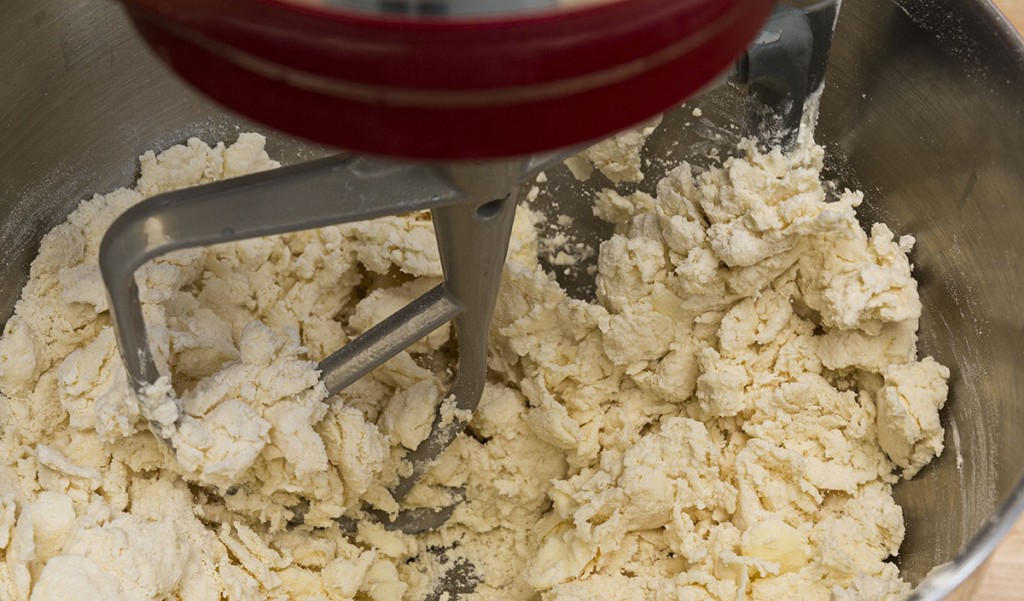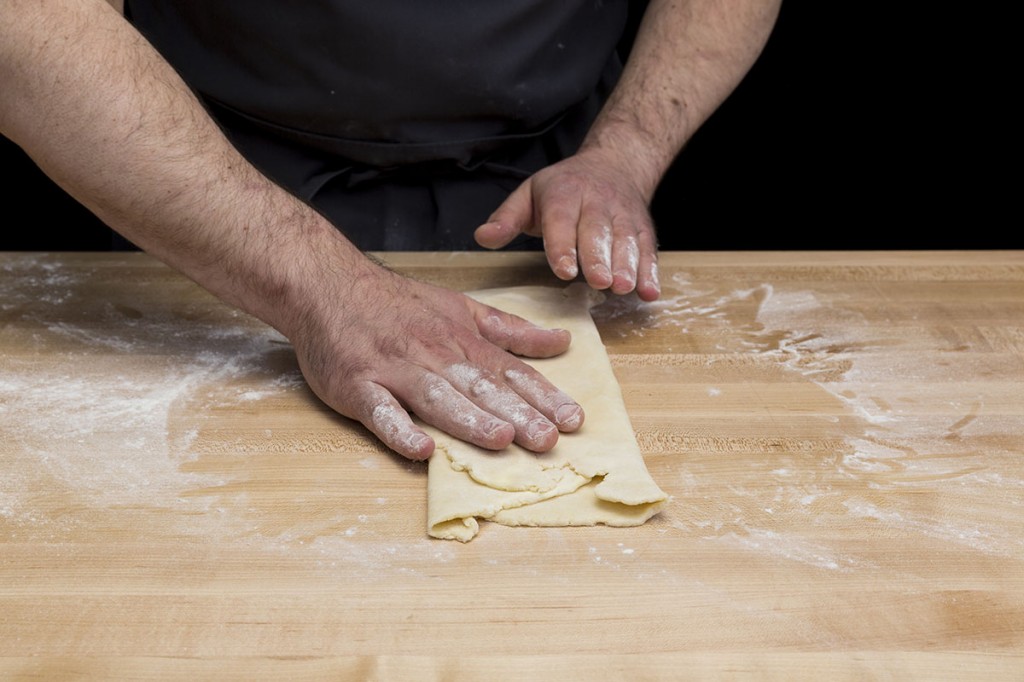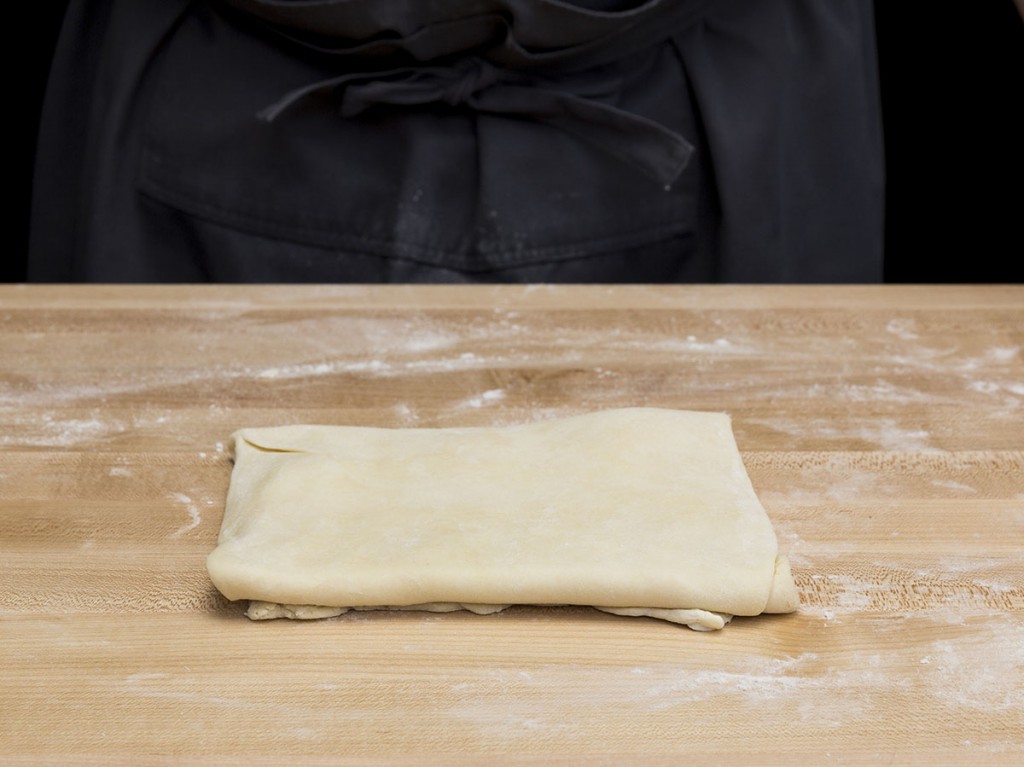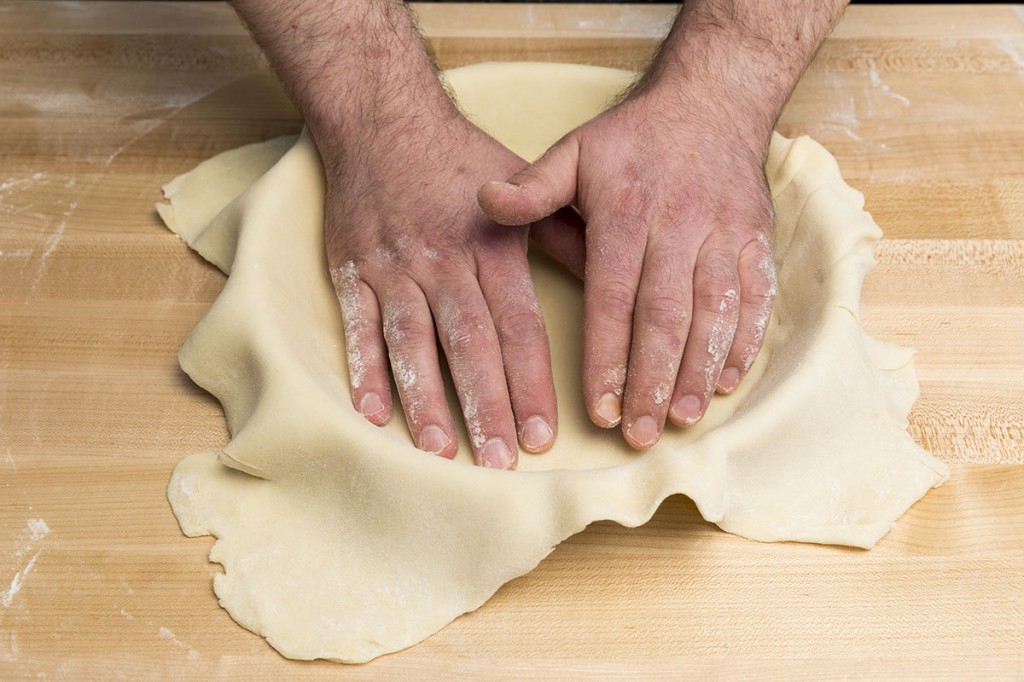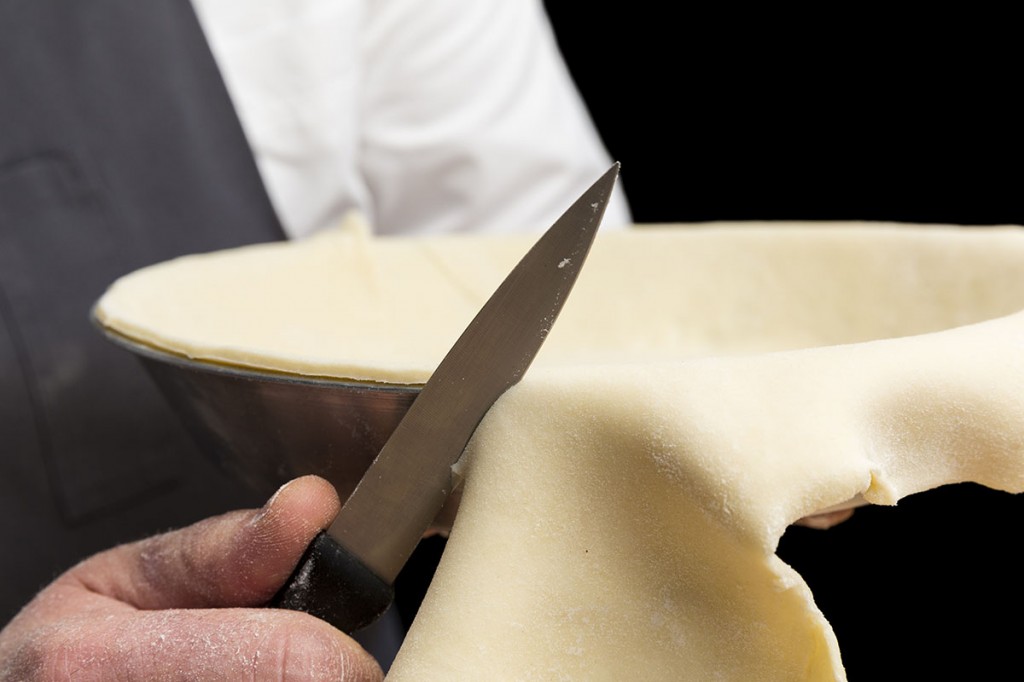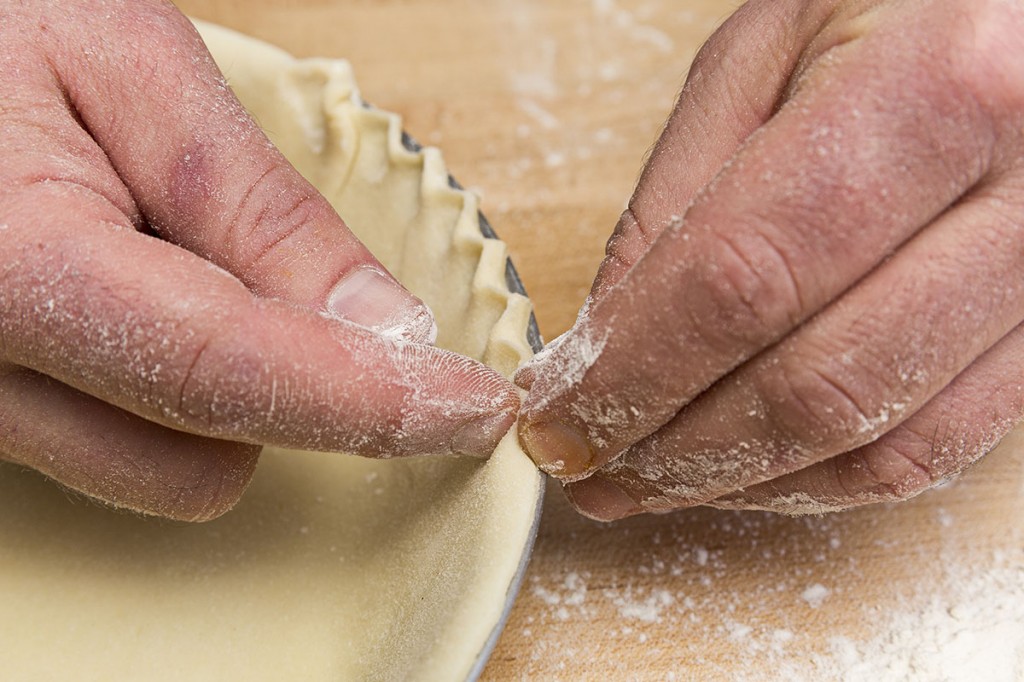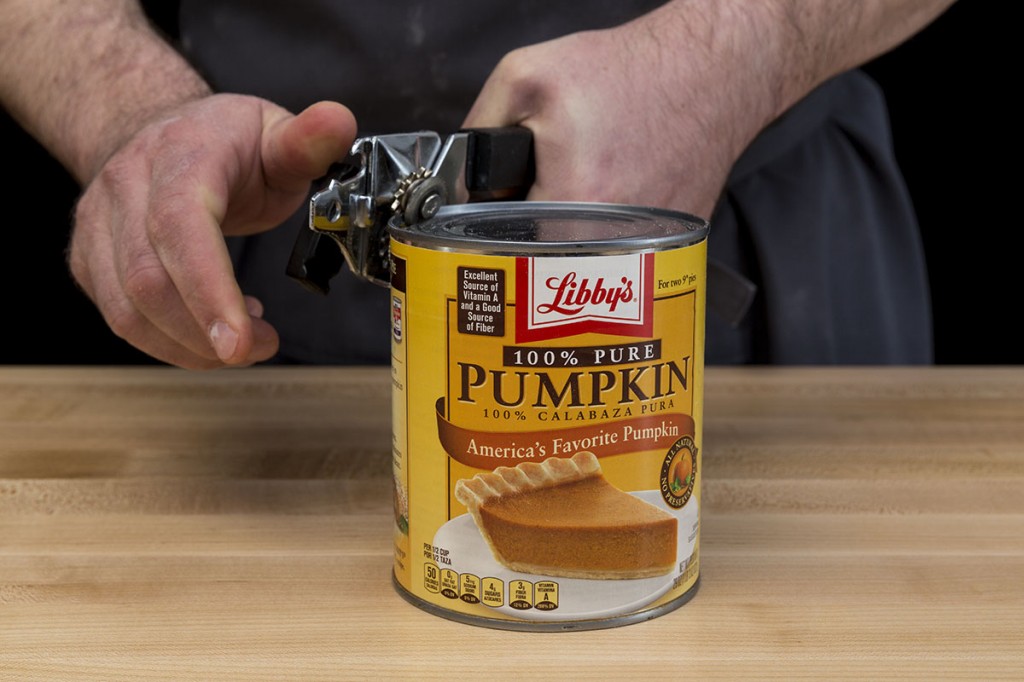Pumpkin pie is one of the most popular Thanksgiving desserts; therefore we devoted some time to analyzing what makes this pie so easy to identify. It’s typically the spices you taste, not the pumpkin, so we came up with a way to extract the true taste of pumpkin while skipping the spices, at least in the custard itself.
We decided to source one of our own recipes from Modernist Cuisine, wherein we pressure-cook carrots with baking soda. Baking soda deepens flavors and enhances caramelization of sugars, which, we concluded, would be the perfect way to accentuate the pumpkin’s essence. But it required finding the best pumpkin for the job. We settled on a type of pumpkin that comes in the shape of a can—it’s soft inside and practically pureed, with a label that says “Libby’s.” For pumpkin-flavored pumpkin, it’s our first choice.
—Francisco Migoya, Head Chef



